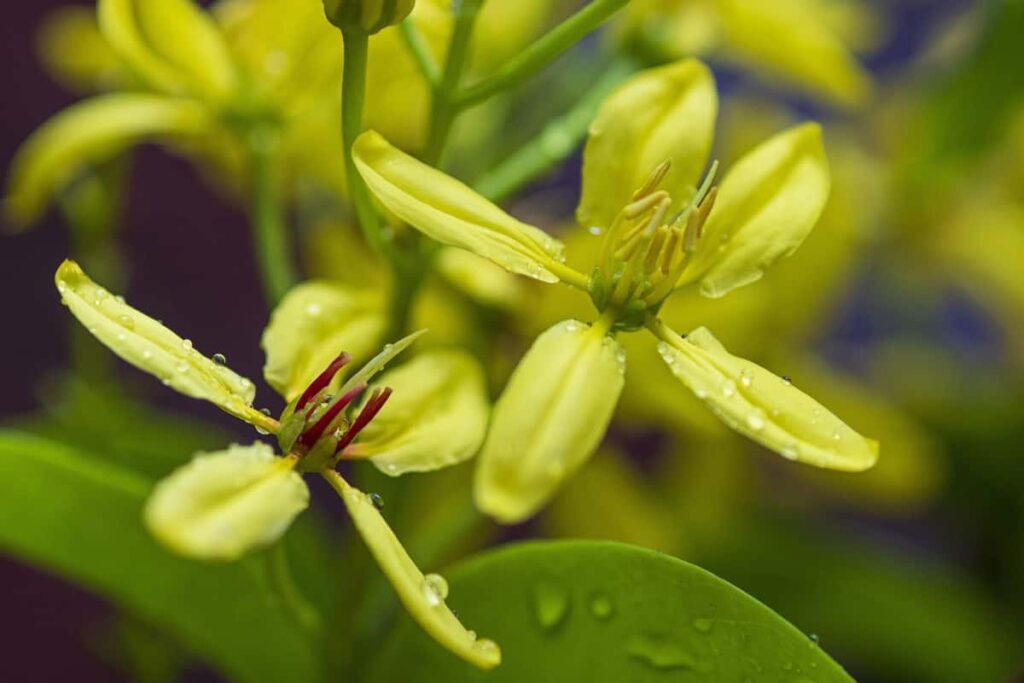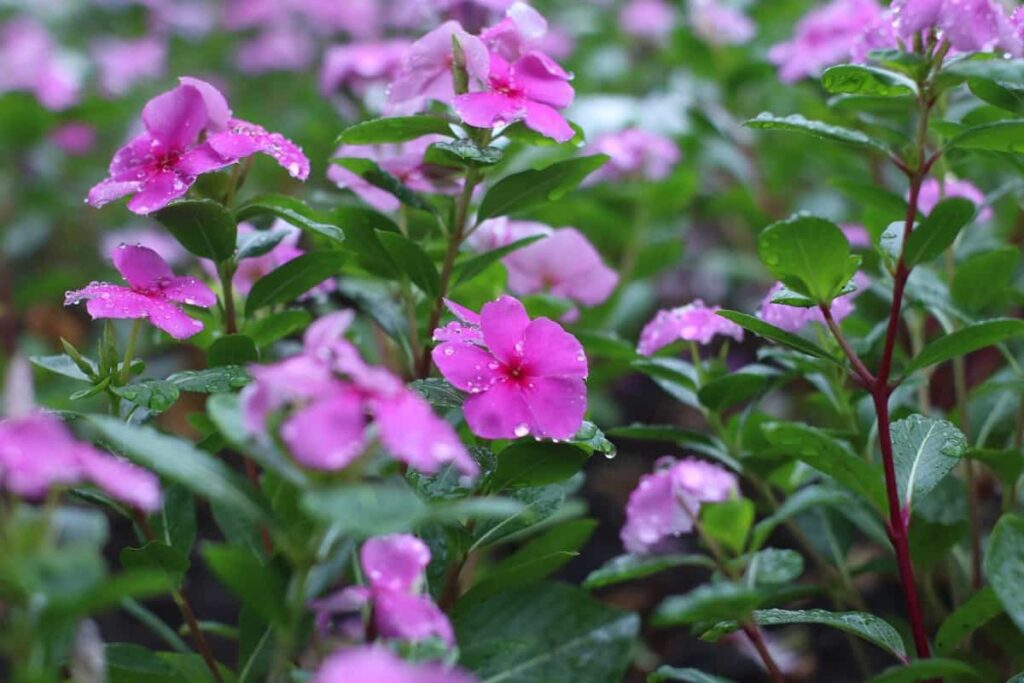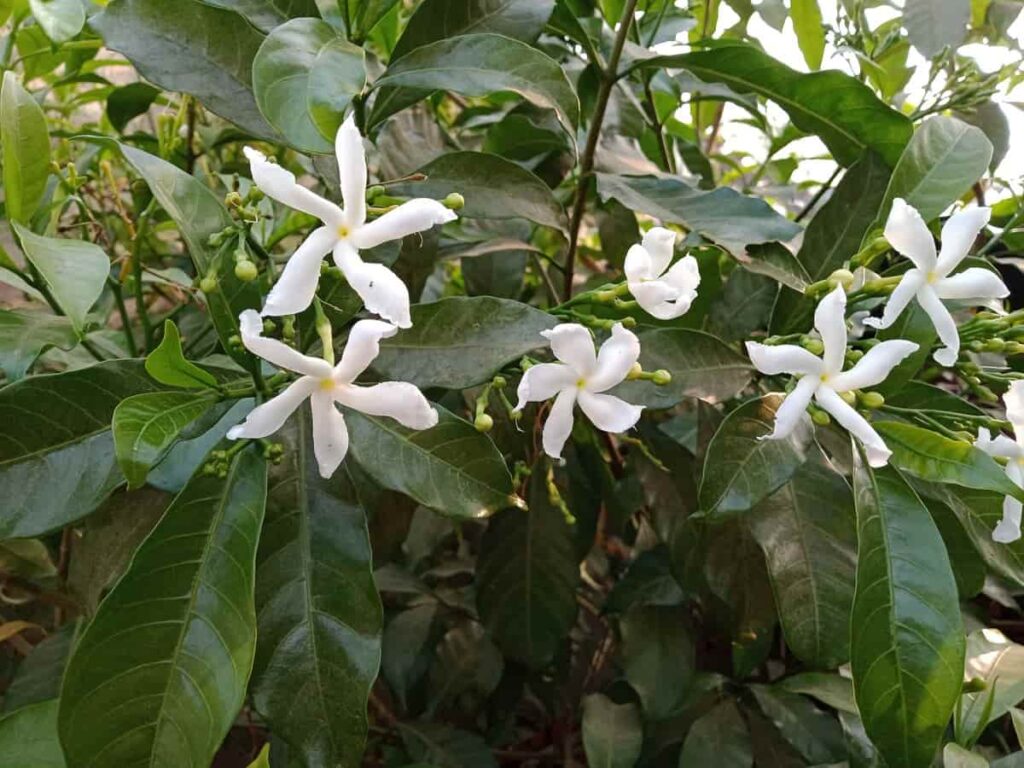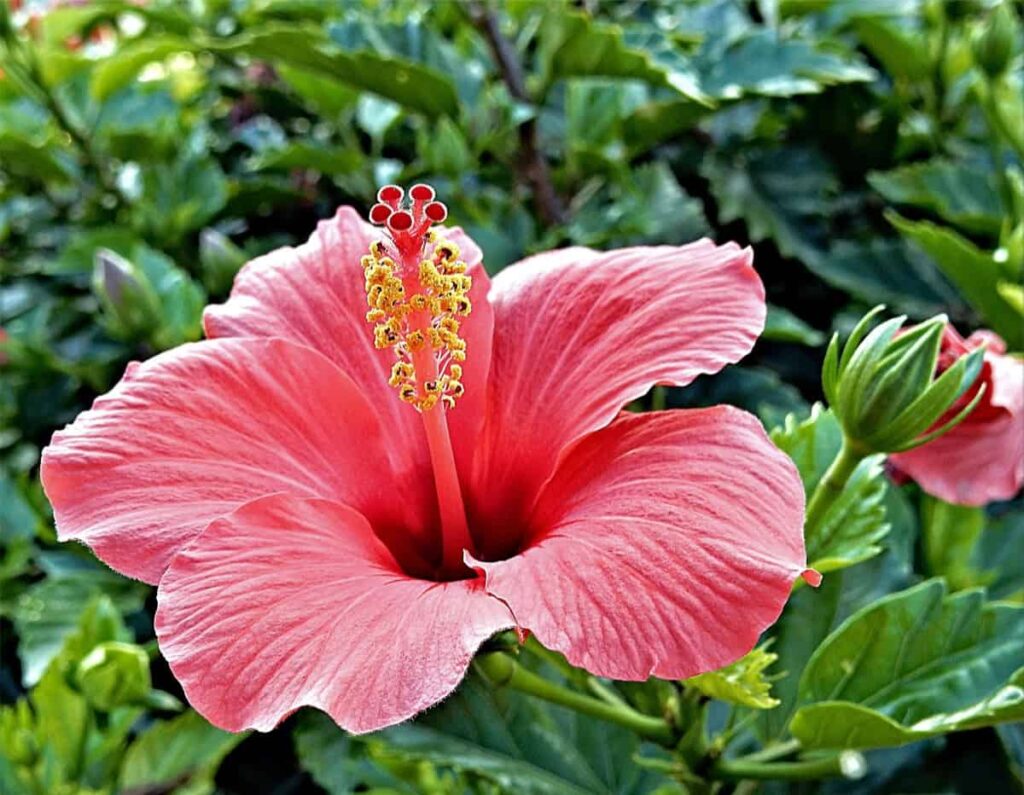If you are not selecting varieties that are tolerant of full sun, growing plants in containers can be challenging. In addition to being drought and arid-tolerant, complete sun plants are well suited to potted environments. An attractive herb that grows well in full sun and containers is rosemary, heat-tolerant, sun-loving, and heat-tolerant. Sunny borders are a popular location for plants that thrive in direct sunlight.
When planting in full sun, it is best to stick with native plants whenever possible. Because these plants are well suited to your area and climate, they are likely to succeed. If you have similar soil, light, and water requirement at your site, you can select plants with the same growing conditions.
16 best outdoor flowering plants in India
Rain lilies
Zephyr lilies are charming plants in the garden, also known as fairy lilies. Rain lilies and crocuses are similar in size and shape, so if you’re unfamiliar with them, you might mistake them for one another. Generally, these plants produce flowers with three upright petals and three identical sepals, ranging in size from narrow to broad. Foliage tends to be grassy and bright green, with a prostrate habit: think of grape hyacinth bulbs, which have a similar appearance.
An individual flower will only last a few days, and the heaviest flush will occur first. There is a possibility that the bulbs will bloom later in the season, especially following heavy rain. The rain lily produces starry petals of pink, yellow, and white color late in summer and until the monsoon. There is little to no maintenance required for this perennial flower bulb to spread abundantly in your garden. Plant them in large numbers, tuck them near boulders, or peek out between other sun-loving plants to create a flower bed.
Plumbago
Plumbago is a perennial shrub with light-green foliage, and sky-blue flowers that bloom in summer and after the monsoon season. It can be used as a shrub, climber, potted plant, or ground cover, depending on how it is pruned. Plumbago grows between 1.5 and 2 m tall with rambling branches under a shrub. During the rainy season, it grows actively, and after flowering, it ceases. An oval, pointed, smooth, and glossy leaf is simple, opposite, 3 to 5 cm wide, and 4 to 10 cm long.
The roots are light-colored when fresh and reddish-brown when they are dry. Roots have brown and striated surfaces. Under natural conditions, the plant remains almost leafless during summer, but under irrigated conditions, it starts growing actively in April. Throughout India, this species is cultivated mainly in gardens. The plant grows wild in parts of Madhya Pradesh and Chhattisgarh, as well as in South India and West Bengal.
Golden Thryallis
Beautiful and low-maintenance, golden thryallis is an excellent ornamental shrub for the garden. The numerous yellow racemes and glittering foliage of this graceful shrub give any garden a golden touch. Canary bush is known as Golden Touch, Golden Shower, Slender Gold Shower, or Rain of Gold. With a neat rounded shape and a dense twiggy mass, this bush can reach 6 feet. The stems of this plant are slender & reddish; they are hairy when young.
In case you missed it: List of Flowers to Grow in Summer in India: How to Plant and Care

Typically, the leaves are oval to elliptical and have two glands at the base. Their positions are opposite, smooth or waxy, and light green to bluish in color. Reddish brown or reddish stalks look like stems. Heat and sun love this evergreen shrub, which is ever-blooming in tropical countries like ours. Moreover, it is drought-tolerant and a good choice for potted plants. Punjab, Haryana, UP, western MP, and Delhi have ideal climatic conditions for these plants.
Bougainvillea
Booganvel is the local name for Bougainvillea, which is not commonly found in houses. This sprawling climber with formidable thorns is often found on the exterior of buildings, such as climbing up trellises or fences or in gardens in subtropical-to-tropical climates. It is best to plant Bougainvillea in the spring, as it grows quickly and adds over 36 inches per season.
Plants with green foliage are known for their vibrant pink, purple, and orange hues, which most people assume are their flowers. These bracts, however, disguise Bougainvillea’s actual flowers, usually tiny white or yellow buds. The best place to plant these plants is on a chain-link fence, a trellis, or an arbor for a lovely color display all summer. These plants do well in tropical and subtropical semiarid climate zones and are commonly found in Maharashtra, Rajasthan, Gujarat, Punjab, Haryana, UP, and western MP.
Nerium oleander
Known locally as Kaner, Nerium oleander grows naturally as a mounded, round shrub or can train into a small, single-trunked tree. When planted in groups or borders, the evergreen foliage provides a dense, leathery, dark green privacy screen. They produce delicately shaped, showy, fragrant pink flowers, although some varieties produce red, orange, yellow, or white flowers. Often blooming from spring to summer, early fall, and year-round in warmer climates, the one- to three-inch flowers appear from spring to summer.
Rose laurel and Jericho rose are common nicknames for the plant. Herbal plants like this are commonly used as ornamental shrubs in Indian gardens. From Nepal westward to Kashmir, up to 1,950m, it grows in the Gangetic plain and Madhya Pradesh. Besides Uttar Pradesh and Punjab, this species can also be found in Baluchistan and south India. Southern India is home to this plant, which is grown along roadsides and fences. Flowers from this plant are used to worship God.
Crown of Thorns
A pretty succulent plant, the Crown of thorns (Euphorbia milii) can bloom almost year-round, even indoors. Along the new stem, thick, bright green leaves grow but watch out for thorns. Showy bracts surround small green flowers in red, orange, pink, yellow, or white. A shrub reaching a height of 3 to 6 feet can be expected to grow from this slow-growing plant.
In case you missed it: 14 Self-Seeding Flowers: Why They are Great for Your Backyard Garden

It will only reach a height of about 2 feet as a houseplant. The euphorbia plant is poisonous to humans and pets. Throughout the year, the Crown of Thorns will repeat its bloom. Insignificant green centers surround showy bracts that resemble colorful petals. The flowers themselves are insignificant green centers.
You can grow the Crown of thorns in containers and place them outdoors wherever you need color and interest in the summer. Before nighttime temperatures drop, bring it inside. Succulents like this one can withstand long drought periods and require little care. Kerala has been home to Crown of Thorns (Euphorbia milii) for centuries, although it is a native of Madagascar.
Showy Stonecrop
Sedum is a large flowering plant found almost everywhere in the world. There are many different kinds of these plants, each with its height, color, and form. Sedums, also known as stonecrops, have fleshy, thick leaves with varying shades of green that are desert-tolerant and drought-tolerant. Typically, they bloom late in the growing season with tiny, star-shaped flowers. Sedums are generally classified as low-growing or upright, depending on their growth habits.
Sedums that grow low and spread tend to form horizontal clumps, while sedums that grow upright typically form vertical clumps that look great along borders. Depending on the variety, these plants can reach heights of 6 to 24 inches and widths of 12 to 24 inches. Although they grow well in full sun, they can also tolerate partial sun. Summer and fall are their blooming seasons.
Cape Periwinkle
Vinca minor, commonly known as periwinkle, is tough, pest-free, and low-maintenance, with broad leaves and flowers that thrive in the sun or shade. Additionally, it provides ground cover and is known for its creeping habit. When planted in warmer climates, periwinkle can be perennial, but it can be annual if planted in cooler climates.
In case you missed it: 365 Days Flowering Plants in India: A Year Of Beautiful Flowers

Blue is the most common flower color on Vinca minor vines in spring, but lavender, purple, and white are also possible. They may occasionally bloom in the summer, but the display will not be as impressive as the spring display. It grows moderately and is typically planted in early spring; however, it can be planted in the fall if it is hardy. Pets and humans can be poisoned by periwinkle.
Bugleweed
Bugleweed is a fast-growing herbaceous perennial ground cover that effectively chokes out weeds. Shiny, dark green leaves and blue, violet, or purple flower spikes can reach eight to ten inches tall, although some cultivars have shorter flower spikes. Variegated foliage patterns and colors are available in many cultivars. Early spring or late summer is the best time to plant bugleweed.
Bugleweed spreads via stolons, which take root along its length to form new plants, allowing it to overrun its planting area quickly. As bugleweed spreads aggressively, plant it in an area where it won’t creep into other areas of your garden or lawn. Depending on their variety, these plants can grow as tall as 6 to 9 inches and as broad as 6 to 12 inches. Blooming time for these plants is May to June, and they prefer full sun to partial shade.
Crepe Jasmine
The crepe jasmine is a beautiful shrub that should be used more often. This plant is also known as a pinwheel flower because of its abundant flowers shaped like a pinwheel. With its white flowers that shine in the moonlight all year long, crepe jasmine is ideal for creating a wow-worthy nighttime garden. A crepe jasmine shrub grows to a moderate density, has a rounded shape, and is evergreen. While the spiraling white flowers are particularly noticeable in summer, they stand out against the dark green, shiny evergreen leaves all year round.
In case you missed it: How to Plant Jasmine from Cuttings: A Complete Growing Guide for Beginners

In the trade, a cultivar named Flore Plena has double flowers. Some gardeners reported a light fragrance in the mornings and evenings, while others reported none. At maturity, shrubs reach a height of about 6 to 10 feet and a spread of about 3 to 6 feet. They will be killed back by a hard freeze, but they will quickly recover. The plants are primarily found in southern and eastern Indian states such as Tamil Nadu and West Bengal, where the climate is warm and humid year-round.
Daffodil
Undoubtedly, daffodils are among the most popular spring-flowering perennial bulbs in growing regions, which require a cold winter to reset themselves. The daffodils bulbs are often purchased prechilled and planted as annuals, even in warm regions. After winter snows melt, strappy basal leaves appear, followed by flowers with trumpet-shaped cups surrounded by six-lobed corollas. Some varieties have yellow blossoms, while others have white, orange, pink, or bicolor blossoms.
Over 32,000 cultivars of Narcissus have been registered. There are more than 40 species of Narcissus. When planted in mid-to-late autumn, daffodils will begin to bloom in early spring, reaching peak bloom about a month before the average last frost date. They are toxic to humans and animals because they contain phenanthridine alkaloids and calcium oxalate crystals. It is possible to die from eating large quantities of bulbs, and handling bulbs can cause severe skin reactions.
Caladium
They make showy houseplants and are heat-loving tropical perennials with almost unparalleled foliage. A striking array of colors and patterns can be found on the plant’s large, heart-shaped or arrow-shaped, paper-thin leaves. Despite only being foliage plants, they can provide a similar visual impact to planting flowers.
Despite being primarily grown for their foliage, they also produce some flowers, which begin as spathes or spikes. After the frost threat has passed, plant these tubers in the spring. Animals and humans can be poisoned by caladium plants, despite their striking appearance. Up to 30 inches tall and 24 inches wide, these plants can grow up to 12 inches in diameter.
Hibiscus
A tropical hibiscus may be a good choice if you want a plant with dramatic, vibrant flowers. Approximately 6 inches in diameter, the trumpet-shaped blossoms have protruding stamens. Plants of the tropical hibiscus family, native to Asia, produce flowers continuously, but each blossom only lasts one day.
In case you missed it: How to Grow Hibiscus from Cuttings to Harvest: Steps to Planting and Care

If grown under ideal conditions, the shrub can reach heights of up to 15 feet by adding up to 24 inches each year. There’s a way for you to enjoy hibiscus plants throughout the year, no matter where you live. The tropical hibiscus plants are grown as perennial garden plants and used as hedges and screens in warmer climates.
Ixora Coccinea
The Ixora is an unusual houseplant that attracts the attention of anyone who enters your home. The Ixora plant is a small shrub native to Asia that grows in subtropical regions. Large clusters of red, yellow, white, or orange flowers appear continuously from evergreen leaves throughout the year on Ixora plants. Despite their ease of growing outdoors under the right conditions, keeping an Ixora plant happy and blooming inside can be challenging even for experienced gardeners. Plants will grow slowly in either location, so patience is critical if you want a large shrub.
Snapdragons
The Snapdragon plant is a popular short-lived perennial that is often grown annually in the garden. The common name comes from the shape of the flower heads, which resemble dragons’ snouts and even snap open and shut when pollinators reach the pollen with their jaws. In spring or fall gardens, snapdragons bloom profusely in intensely saturated colors (almost every hue) throughout cool weather.
In case you missed it: Balcony Grill Garden Ideas: Small Spaces, Apartments, and Best Plants to Grow on Grills

Blooming begins at the stalk bottom and works its way up, resulting in a long bloom period. Even though snapdragons tend to slow down and stop blooming in the midsummer heat, they will perk up in the fall if they are kept hydrated. Depending on their variety, these plants can reach heights of 6 to 48 inches and widths of 6 to 12 inches.
Clitoria ternatea
As with the Blue Indigo plant and the Dwarf Poinciana, Clitoria Ternatea, also known as the butterfly pea, is a flowering plant in the Fabaceae family. Tropical Asian regions, including the Indian subcontinent and Southeast Asia, are native to the herbaceous plant. It grows fast and spreads quickly from 6 to 10 feet in height and 2 to 3 feet in width. Butterfly peas are fast-growing evergreen perennial plants.
The leaves of these plants are deciduous and elliptic at maturity and reach a height of 1 to 9 feet. Plants perform best in areas with approximately 12 inches of rainfall per year in the summer. Purple butterfly pea flowers are large, showy, and measure 1 to 3 inches in length.
The hibiscus usually blooms early in the spring, early in the summer, or early in the fall in various colors, including mauve, white, and deep blue. Clitoria ternatea flowers are characterized by a prominent banner, wing, and keel, resembling butterflies. An upside-down position is used for these vivid blue flowers, which bloom in the morning. It is best to place the plants in full sunlight for the best flowering results.
Conclusion
Investing in outdoor plants is one way to make cost-efficient improvements that won’t deteriorate over time. You can brighten up any property with the right outdoor plants and a few gardening skills. By adding the best outdoor plants for your home, you can turn every head in your neighborhood and increase the value of your property.
- Broccoli Seed Germination and Selection
- Asparagus Seed Germination and Variety Selection
- Seasonal Flower Gardening: Best Practices for Spring, Summer, Fall, and Winter
- How to Grow Hibiscus from Flower
- Plantation Ideas for Home Decoration: A Beginners Guide
- Flower Garden Designs and Layouts for Beginners
- Planting and Spacing Techniques in Papaya: A Beginner’s Guide
- Growing Gold: Essential Techniques for Planting Pineapples
- How to Make Kalanchoe Plant Bushy: Home Remedies and Solutions
- 11 Reasons Why Your Gardenia is Not Blooming: Home Remedies and Solutions
- Eco Elegance: The Guide to Designing a Drought-Tolerant Landscape
- Gardening on a Slope: Strategies for Hillside Landscaping
- Nourish and Flourish: Top Organic Mulches for Thriving House Plants
- Everything You Want to Know about Indian Mogra Flower: Discover Uses and Growing
- Green Thumb Success: Expert Tips for Cultivating Greenhouse Pumpkins All Year Round
- Maximize Growth & Flavor: The Ultimate Guide to Companion Planting in Herb Gardens
- How to Control Rhododendron Problems Naturally: Home Remedies and Organic Ways to Fix Them
- Natural Magic: The Remarkable Benefits of Cinnamon for Plants
- Best Steps to Revive Dying Tulip with Natural and Organic Treatment
- 10 Reasons Why Your Angel Trumpet is Not Blooming: Remedies and Treatment
- How to Fix Periwinkle Leaf and Flower-Related Problems: Natural Remedies and Solutions
- How to Fix Zinnias Leaf and Flower Problems: Discover Natural and Home Remedies
- Organic Steps to Induce Lemon Tree Flowers: A Comprehensive Guide
- Bloom Booster: Crafting the Perfect Homemade Bougainvillea Fertilizer
- Optimizing Growth: A Guide to Applying NPK Fertilizer for Potted Plants
- 10 Best Homemade Fertilizers for Rubber Plant: DIY Recipes and Application Method
- How to Boost Female Pumpkin Flowers: Effective Steps for More Flowers and High Yields
- Transform Your Indoor Garden: Top Benefits of Pink Salt for Houseplants
- 10 Best Homemade Fertilizers for Peacock Plants (Calathea): Easy DIY Guide
- Unlock Blooms: 9 Reasons Why Your Potted Chrysanthemum is Not Blooming
- 8 Reasons Why Your Potted Hibiscus is Not Blooming: Fix it with Simple Solutions
- Unlock Blooms: 9 Key Reasons Your Potted Frangipani Won’t Flower
- 10 Reasons Why Is My Ice Plant Not Blooming: Remedies and Treatment
- 10 Reasons Why My Potted Hydrangea Not Blooming: Treatment and Remedies
- 10 Reasons Why is My Wisteria Not Blooming: Remedies and Treatment
- 10 Reasons Why is My Goldfish Plant Not Blooming: Remedies and Treatment
V.Good informative article.